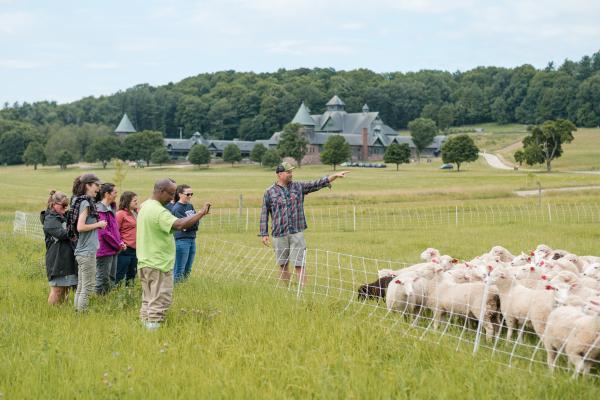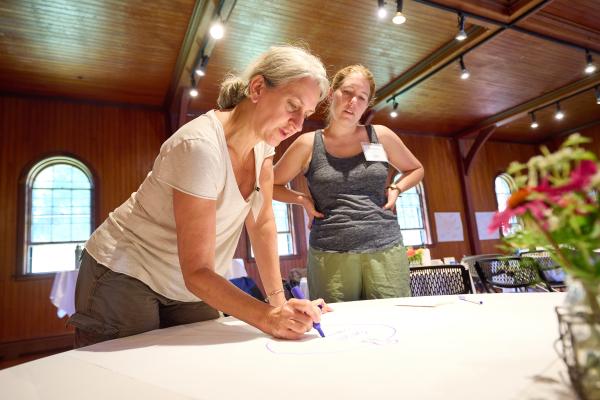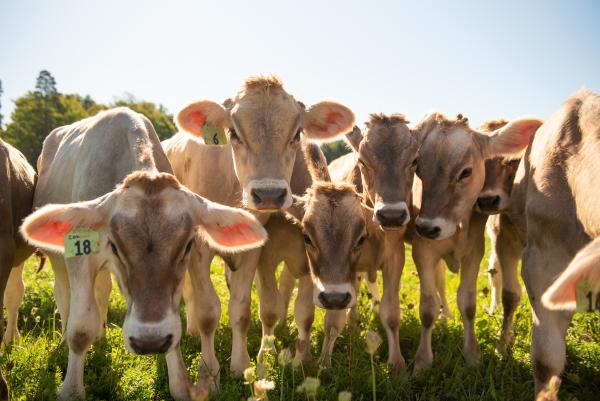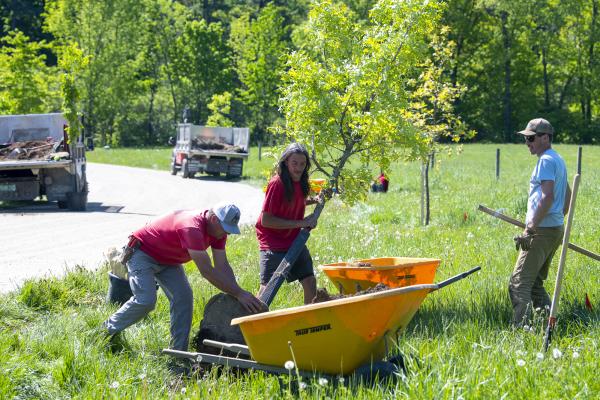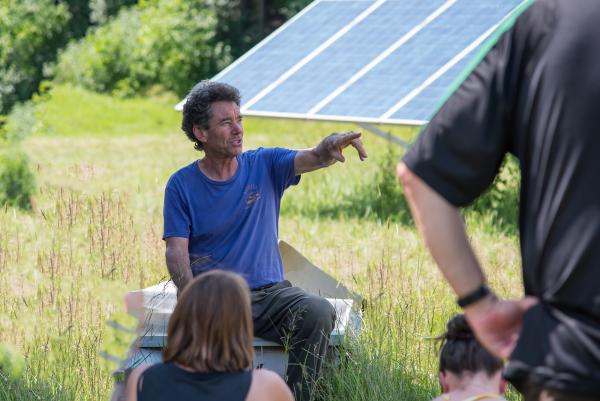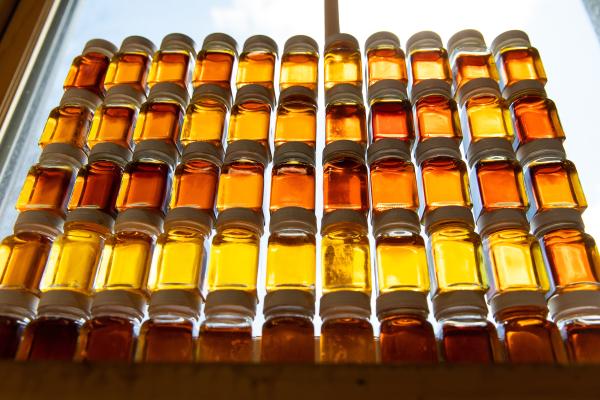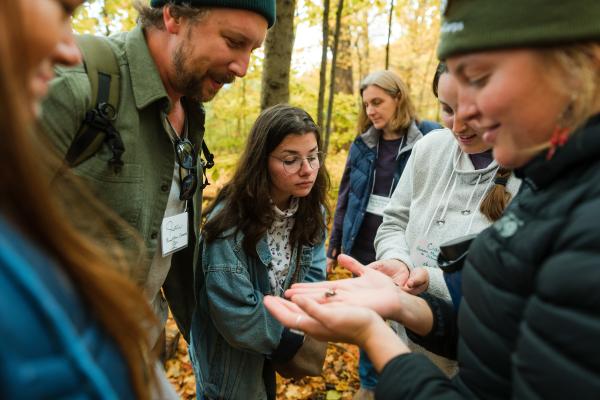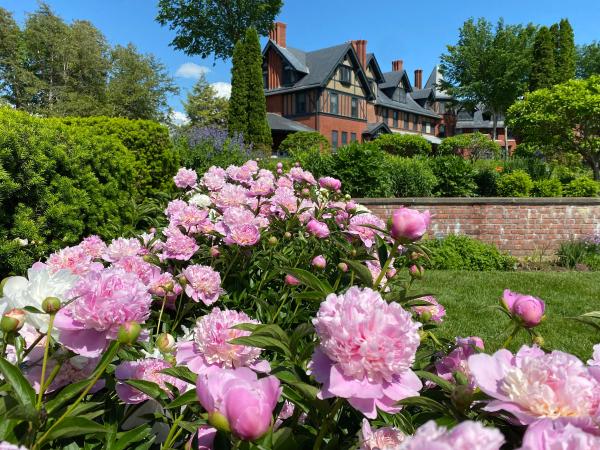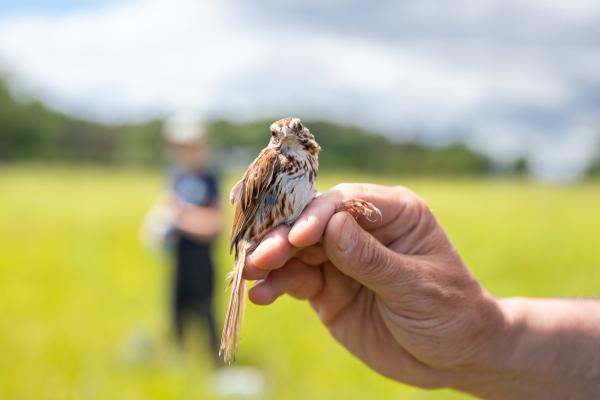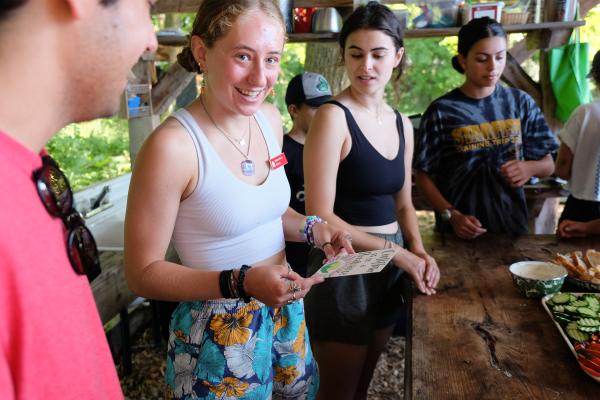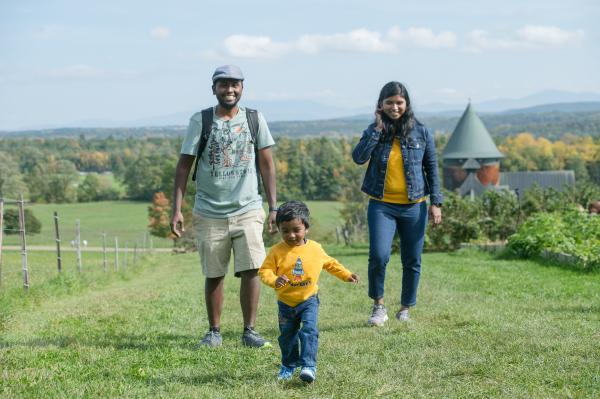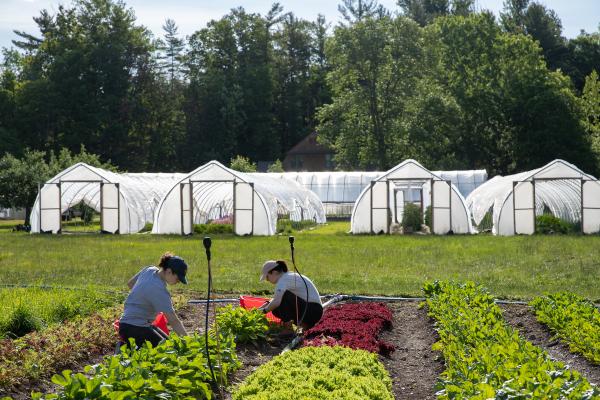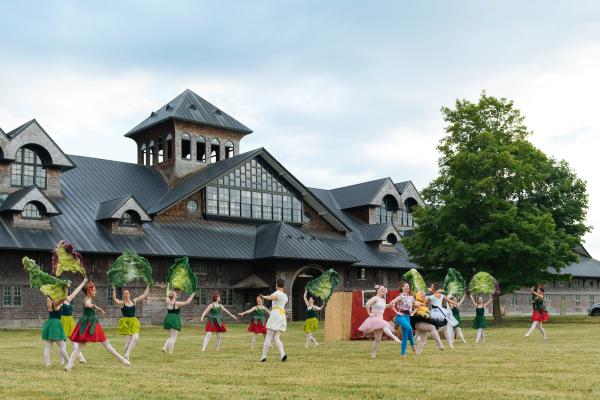Congratulations 2022.
What You Made Possible in 2022
Numbers are just one way to convey the depth and breadth of all that we can accomplish thanks to your support for Shelburne Farms. As we look towards 2023, we want to thank you for the impact you helped make possible in 2022 – a great year in so many ways!
In 2022, we celebrated 50 years of being an independent nonprofit organization dedicated to learning for a sustainable future — and our spirit of innovation in education remains strong. In 2022 our national work expanded with offerings like the Farm to School Adaptation program for states across the U.S. and an equity-centered climate change education pilot of Park for Every Classroom for national parks. We kicked off a new hybrid model for Cultivating Pathways to Sustainability, a partnership program that supports youth and adults around the world to develop local solutions to global challenges based on the UN’s Sustainable Development Goals. On our campus, we reimagined school programs to better connect students to food, fiber, and the land. (photo: Andy Duback)
The Institute for Sustainable School’s programs reached 1,500 educators. Among them: 18 educators from Vermont to California who began a year-long journey focused on advancing climate action as part of our Climate Resiliency Fellowship. And, we enrolled our first-ever graduate students in the new Education For Sustainability Certificates, offered in partnership with the University of Vermont. Over the course of these multi-year programs, educators will strengthen their ability to bring sustainability to life for learners and transform their schools and communities. (photo: Bear Cieri)
Our milking herd of 119 cows produced over 1.5 million pounds of milk that was crafted into 166,328 pounds of cheese. Summed up, the herd produced their collective weight in cheese! (A Brown Swiss cow weighs 1,300-1,400 lbs). Those numbers were supported by pastures that were healthy and productive well into the fall. We also continued experimenting with biochar: we added 32 tons to our dairy lagoon in May to reduce methane and nitrous oxide emissions, then spread it on the fields to sequester about 60 tons of CO2, equivalent to the emissions from burning 6,000 gallons of gasoline. (photo: Daria Bishop)
We planted 89 new trees along our roads as part of our landscape renewal plan: native, heat tolerant species like hickory and tulip, as well as signature sugar maples and white pines. In 2023, we’re also planning to plant more trees integrated with our pastures (“silvopasture”) in order to store more carbon in response to climate change, while maintaining key Olmsted landscape elements. (photo: Caleb Kenna)
288 gifts, totaling more than $500,000, were given in memory of Marshall Webb to support our Climate Action work. A co-founder of the nonprofit at Shelburne Farms in 1972, Marshall Webb worked for five decades at the farm until his untimely passing in August 2022. As Carbon Drawdown Coordinator, he spearheaded our efforts towards achieving the Climate Action goal of carbon negative status by 2028, the year that he would have turned 80 years old. The Marshall Webb Climate Action Fund will be used in his honor and memory to help Shelburne Farms achieve that goal. (photo: Courtney Ley)
We made 1,295 gallons of maple syrup from our sugarbush, a record-breaking season that included 30 days of boiling (also a record!). (photo: Sarah Webb)
In October, more than 20 farmers and farm-based educators gathered at the farm for the first ABCs of Farm-Based Education program since 2019. They joined our staff to learn in the Education Center, Outdoor Classroom, Market Garden, and beyond. Educators take ideas back to their own places, inspiring farm-based programming around the northeast that connects learners to their food and the land. Said one participant: “It fed my spark. I’m feeling inspired and excited about my future as an agricultural educator.” ABCs is a program of the Farm-Based Education Network, a project administered by Shelburne Farms. (photo: Andy Duback)
We reopened the Shelburne Farms Inn. This was no small feat after it had been closed for two years, and given the severe staffing constraints in the hospitality field. The kitchen was back in action serving Inn guests, and two-thirds of all the food served was grown or produced locally, including nearly a third directly from our working farm–cheddar, vegetables, meat, and maple syrup. The Inn’s Formal Gardens became more central to the walking trail experience, and new programs helped introduce more visitors to the gardens’ history, beauty, and ongoing care. (photo: Holly Brough)
As of 2022, Professor Noah Perlut has banded more than 10,000 grassland birds at Shelburne Farms, and monitored 3,000. His project, now at 21 years and going strong, is the longest standing of many research studies that Shelburne Farms supports on our campus. In 2022, scientists, undergraduates, and graduate students conducted research on grassland birds, water quality remediation, bird malaria, and precision agriculture. And the MOTUS tracker, installed last year, detected 556 banded birds, from the arrival of an American Pipet on May 5, to the last recorded bird of 2022: a horned lark on December 5th. (photo: Sarah Webb)
Twelve education and culinary fellows spent learning semesters at the farm, including Gemma Diforio, UVM '24, pictured. Through the summer and fall, these college students discovered and supported our professional farm-based and farm-to-table programming, shared their own expertise, and experienced the breadth of our educational campus. (photo: Andrea Estey)
Over 100,000 people explored our working farm along expanded walking trails, which we kept open by donation for the third year. (Look for additional new trails in 2023!) From May to October, the Children’s Farmyard was part of that experience for many, including more than 2,000 learners from schools and community groups. Roughly 400 square bales of hay gave our Farmyard animals the energy to welcome everyone! Lots of visitors also enjoyed discovering the sun-to-cheese story firsthand during nearly 140 “Meet A Cheesemaker” chats. (photo: Daria Bishop)
Nearly 60% of the produce we grew in our Market Garden went directly to our community at the Farm Store; over 25% went to the inn kitchen to create both meals for guests and packaged foods for our community. We built new hoop houses and acquired a new chicken coop, allowing us to expand our flock with 140 new Red Sex Link chickens, a hybrid of a Rhode Island Red and a Delaware. They produced 1,965 dozen eggs! If you placed those cartons in a single line, they’d reach across 5 football fields! (photo: Sarah Webb)
Approximately 43,000 cedar shingles were installed on the Breeding Barn in 2022; 80,000 more will go up in 2023. Laid end to end, that’s nearly 33 miles of shingles! They mark the final phase of essential exterior work on the historic barn, including repairing and conserving the windows, siding, and doors below the roof-line, and installing modern fire protection technology. The barn inches closer to the vision of it being a fully operational three-season gathering hall for educational and community events—like Farm to Ballet! (photo: Brandon Parrish)
Comments
WELL DONE!
